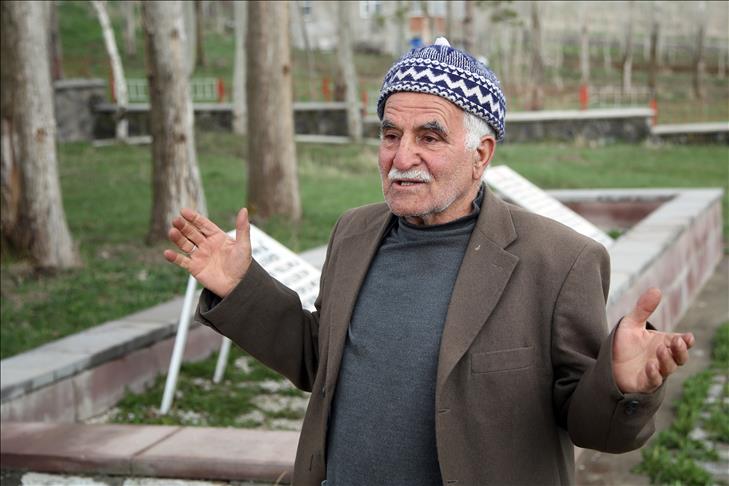
ERZURUM, Turkey
A villager living in eastern Turkey has told The Anadolu Agency he "cannot forget" the 1986 excavation of a mass grave of people believed to have been massacred by Armenians in the early 20th century.
Izzettin Eltas, 72, had attended excavation work conducted by Erzurum-based Ataturk University’s Turkey-Armenia Relations Research Center. Archival research from the college points to a massacre of 278 Muslim Turks in the area during that time.
The bodies of the people believed to have been killed in Erzurum’s western town of Alaca by Armenians between 1906 and 1922 are listed according to Turkey’s official record of Armenian violence, the Caucasus and Anatolia archive.
"Bodies were found piled up ten meters under the ground’s surface. Victims were residents of the village of Alaca and were killed during the intense Armenian cruel time," Eltas says.
"We dug the mass grave and we uncovered the dead bodies of Muslims. We had counted the skulls and counted 278, but we realized that our martyrs’ number in our village was more than 278."
According to a Turkish official archive, between 1906 and 1918 massacres against Turkish people were at their most intensive.
"During this period, the Armenians first collaborated with the Russians, who had occupied a considerable part of East Anatolia, and carried out all kind of violence and genocide in the regions under Russian occupation," the archive says.
Eltas rebuffed allegations of a Turkish "genocide" of Armenians.
"If we had done the massacre, today no Armenians would not exist. The massacre does not belong to our religious or Turkish national behavior," he claimed
According to a Turkey-Armenia Relations Research Center document, 185 mass graves have been found in eastern and southeastern Anatolia. The organization says: "Mass killings of civilians were carried out in the region, including in Diyarbakir, Mus, Bitlis, Van, Erzurum, Erzincan, Kars, Ardahan, Igdir, Trabzon, Kilis, Adana, Osmaniye, Antep, Bayburt, Unye, Maras."
The 1915 events took place during World War I when a portion of the Armenian population living in the Ottoman Empire sided with invading Russians and revolted against the empire.
The Ottoman Empire relocated Armenians in eastern Anatolia following the revolts, resulting in Armenian casualties during the relocation process.
Armenia has demanded an apology and compensation, while Turkey has refuted Armenian claims about the incidents saying that although Armenians died during the relocations, many Turks also lost their lives in attacks carried out by Armenian gangs in Anatolia.
Ankara agrees that there were Armenian casualties during World War I, but says that it is impossible to define these events as "genocide."
Anadolu Agency website contains only a portion of the news stories offered to subscribers in the AA News Broadcasting System (HAS), and in summarized form. Please contact us for subscription options.


